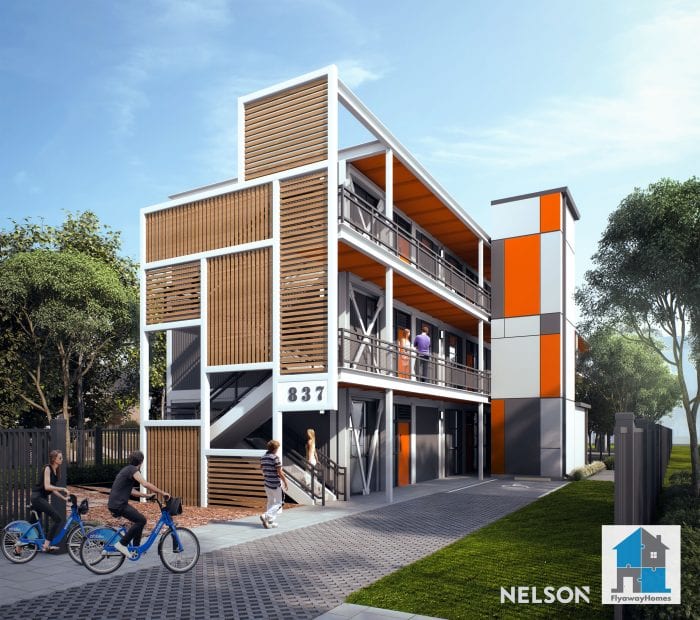A Modular Solution to an Expansive Challenge
 The 2018 Homeless Count reported that upwards of 53,000 L.A. County residents lack shelter — a 60 percent jump within the last seven years. To address the crisis, L.A. City voters passed Proposition HHH in November 2016, providing $1.2 billion in tax-exempt funding to build 10,000 units of permanent supportive housing through 2026. County voters approved Measure H, a 10-year sales tax hike dedicated to homeless services. Affordable housing construction costs currently top $500,000 per unit, and projects often take 2-3 years, or more, to complete.
The 2018 Homeless Count reported that upwards of 53,000 L.A. County residents lack shelter — a 60 percent jump within the last seven years. To address the crisis, L.A. City voters passed Proposition HHH in November 2016, providing $1.2 billion in tax-exempt funding to build 10,000 units of permanent supportive housing through 2026. County voters approved Measure H, a 10-year sales tax hike dedicated to homeless services. Affordable housing construction costs currently top $500,000 per unit, and projects often take 2-3 years, or more, to complete.
Enter the 82nd Street Development — one way to fast-track units at a fraction of the cost — and 2015 Woodbury University Bachelor of Architecture graduate Justin Yap.
The 9,300-sq. ft. parcel at 837 W. 82nd Street in South L.A. will host 32 units of “permanent supportive housing”– in this case, manufactured in Canada by Kuvella Modular for project manager FlyAwayHomes and eventual operator The People Concern. Justin made his way from San Francisco, where he works for the architectural firm Nelson, to the 82nd Street Development project through a recruiter who was familiar with his interest in modular design.
FlyAwayHomes’ mission is straightforward: provide sustainable housing for the community’s most vulnerable by building permanent supportive housing developments as viable real estate investment vehicles, without government funding or charitable donations. The organization was just awarded $1 million in the Los Angeles County Innovation Challenge, a competition backed by Measure H sales tax revenue.
“This is my first permanent supportive housing project,” Justin says, reflecting on past work in healthcare, senior living and tenant improvements. “At school, I didn’t envision my career moving in this direction.” Having grown frustrated at the slow pace of progress on hospital projects, he was open to fresh inspiration.
“I had moments where I asked myself, ‘Was architecture even the right place for me to be? What’s the point? I’m only helping making the rich richer.’ I began thinking of working for nonprofit organizations and possibly build around the world as a ministry.” Today, he regards the 82nd Street Development as an answer to his prayers.
“This project is both experimental and innovative,” he says. “It’s experimental in the sense that most architects design buildings with steel stud and wood framing. Any architect/designer who starts with a shipping container needs modular-like thinking and a real understanding of waterproofing. Shipping containers are generally water tight within itself, but condensation is inevitable – it’s just physics — and traditional exterior wall assembly requires weep holes for moisture to escape.”
Technical nuances aside, the economic advantages of modular housing for the homeless are compelling, Justin suggests. “Traditional buildings can take a year or two, or more, to complete depending on the size and type of the structure,” he says. “While I can’t speak about specific budgets, this approach saves a substantial amount of time, and as the saying goes, time is money. We aim to have everything fabricated, shipped, and completed on site within six to eight months this year.”
From the architect’s POV, might a modular home be more of a “product” than a “building?”
“The architect’s role is to deliver service,” Justin says. “In this case, our service is providing information to construct a building — sort of like the IKEA build-it-yourself diagrams, but with highly detailed information.”
In the meantime, he believes the FlyAwayHomes approach can make a dent in the homeless crisis. “FlyAway does have that potential,” he says. “Not sure how big since that relies on the political side, but we all dream that we as a team, will be making an impact in L.A. and on other cities around us – hopefully following a similar path.”